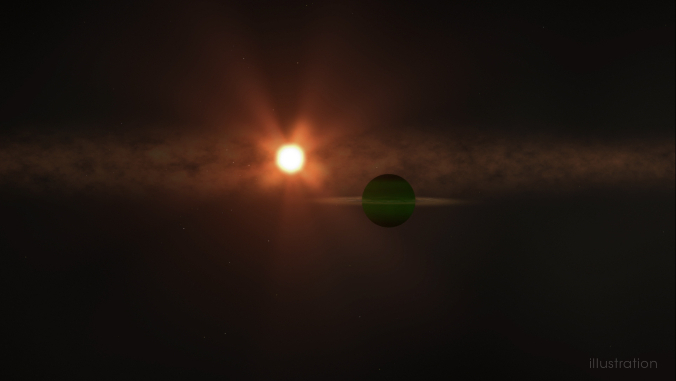As mankind's diligent efforts to explore and learn about the expanse of the universe continue, we got one step closer to understanding the beginnings of our very own solar system. Enabling this pursuit is a new study that reports the discovery of a 'baby' planet orbiting a closeby red dwarf star.
Named 'AU Mic b', and orbiting, AU Microscopii or 'AU Mic', the planet is approximately the size of Neptune. AU Mic is a red dwarf, which is the smallest and coolest variety of stars in the broad range of stars found in the universe and is of very low mass.
It is the second closest young star to Earth. "This is an exciting discovery, especially as the planet is in one of the most well-known young star systems, and the second-closest to Earth," said Michael Bottom, co-author of the study.
Discovering a 'Baby' Planet

Astronomers from the University of Hawai'i at Manoa, who are a part of an international tea, discovered the planet. AU Mic b requires only eight and a half days for the completion of an orbit. NASA's TESS planet-finding satellite spotted the planet as it passed in front of AU Mic periodically.
Every time it passed the star, it blocked a small fraction of its light. A confirmation of the signal was provided by the observations from the Spitzer Space Telescope and with the NASA Infrared Telescope Facility (IRTF) located on the island of Maunakea in Hawaii. For the observations made on the island, a new instrument known as iSHELL, that measures the motion of stars such as the AU Mic accurately.
As the star 'wobbled' in response to the planet's gravitational pull, the wobble was measured by the instrument. The measurements from iSHELL conclusively proved that that AU Mic b was a planet. Had it been a companion star, the wobble or motion would have been considerably larger.
Still in its 'Infancy'
As far as the age of the star and the planet goes, astronomically, they are still in their infancy. According to scientists, the system is only nearly 25 million years old. In fact, that planet's youngness is characterized by the debris and dust left behind after its formation, and orbit around it.
As the debris collide, they disintegrate into smaller dust particles that orbit the star as a thin disk. The disk was detected using the UH 88-inch telescope on Maunakea in 2003. The newly-located AU Mic b orbits within the region that is cleared-out within the disk.
Expressing hope about the possibility of finding other planets in the system, Bottom said, "In addition to the debris disk, there is always the possibility of additional planets around this star. AU Mic could be the gift that keeps on giving."
Eric Gaidos, another co-author of the study, pointed out that as planets mature, they change. This includes a movement in their orbits and the transformation of the composition of their atmospheres. He explained, "Some planets form hot and cool down, and unlike people, they would become smaller over time. But we need observations to test these ideas and planets like AU Mic b are an exceptional opportunity."
Providing Clues to the Beginnings of Earth-like Planets
Along with its younger age than the Sun, AU Mic is also significantly dimmer, redder, and smaller, as it is a red dwarf. Several Earth-sized planets continue to be discovered by the TESS satellite around older red dwarfs. Some of them could be habitable. The leanings from AU Mic b and its star can enable a better understanding of the history of these detected planets.
Talking about how findings from the star and the planet can facilitate future discoveries, Gaidos added, "AU Mic b, and any kindred planets that are discovered in the future, will be intensely studied to understand how planets form and evolve. Fortuitously, this star and its planet are on our cosmic doorstep. We do not have to venture very far to see the show."









